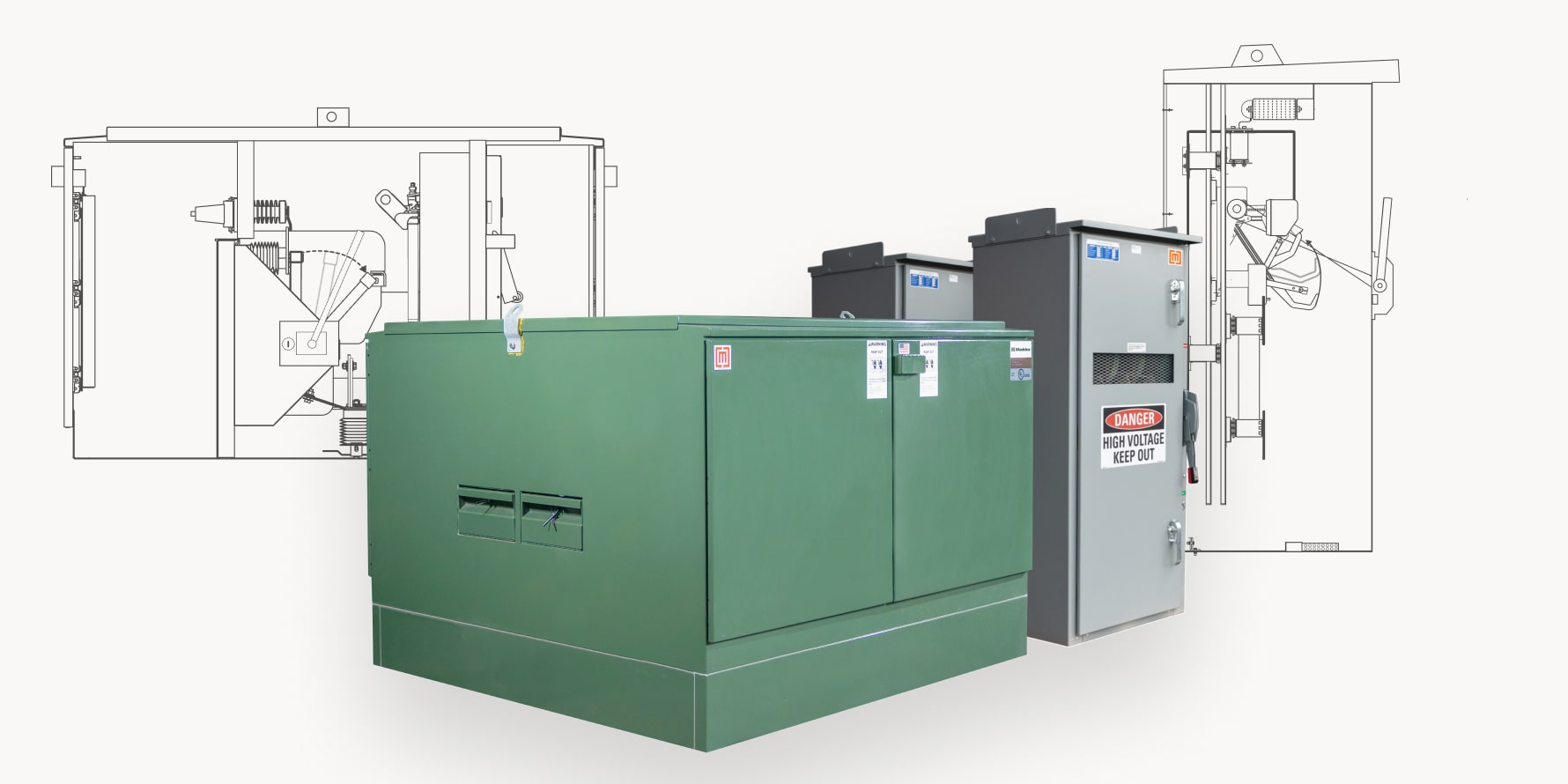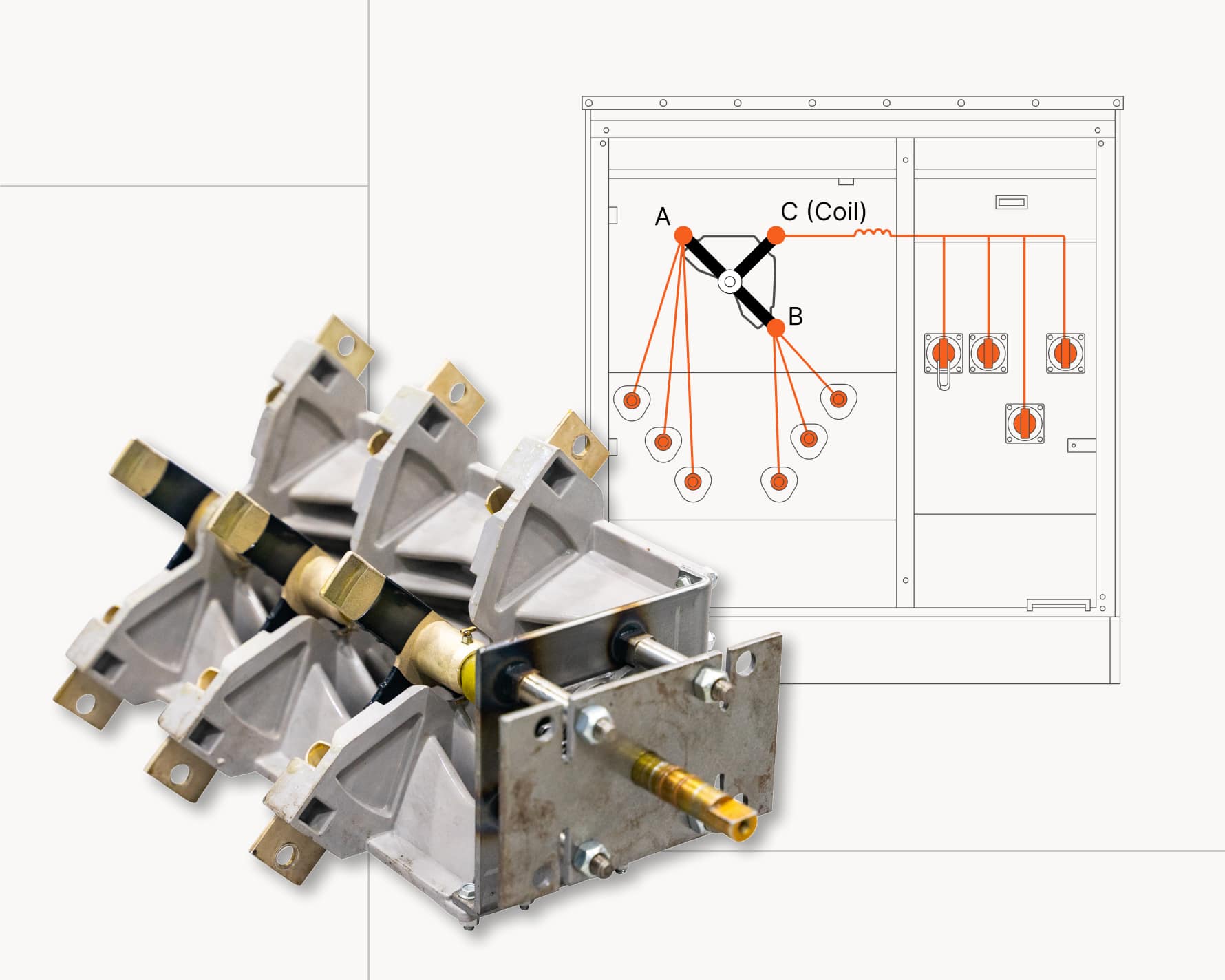Guide to Switchgear: Metal-Enclosed and Pad-Mounted
Switchgear Basics: Learn what they are, how they work, and the key differences between metal-enclosed and pad-mounted switches.
October 7, 2025
Parts
All electrical systems need two things:
- a way to disconnect from the power source,
- and overcurrent protection.
These two functions are vital to every power system. Imagine if your home electrical system couldn’t do either of these. You’d never be able to turn the power off, and all of your appliances would be vulnerable to fault current.
Switchgear do this for the grid. These units are designed to manage and protect power systems.
Let’s look at what they are and their different types.
What is switchgear?
Switchgear are electrical equipment with one or more switches, combined with protection devices, for controlling power in a system.
How many switches the switchgear has depends on your project. Some units have a simple on-and-off switch paired with fusing. Others are complex, with multiple sections, relays, fuses, metering, etc.
What do switchgear do?
The two primary functions of switchgear are protection and a means of disconnection.
Disconnection
Disconnecting the power source stops the flow of power to your system and to any connected loads. There are plenty of reasons that you’d want to do this. You may need to open a circuit for maintenance or repairs, or you could be adding new units to the existing circuit. Switchgear let you turn on and off different sections of your power system.
Protection
They also protect electrical equipment from overloads and fault current. Fuses or breakers inside the switchgear interrupt harmful overcurrents that would damage equipment.
There are two main types of switchgear: metal-enclosed and pad-mounted.
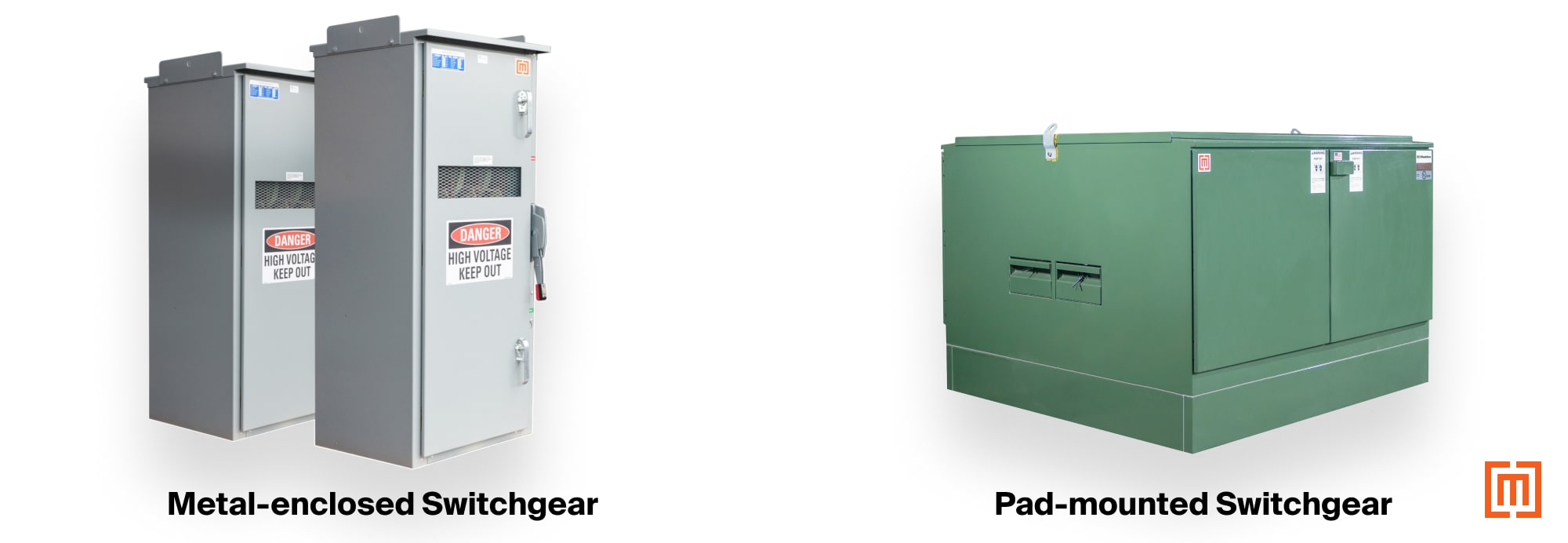
We’ll start with metal-enclosed.
Types of Switchgear
What are metal-enclosed switchgear?
Metal-enclosed switchgear are electrical switching devices housed in a grey, non-tamper-proof metal enclosure. They can be installed indoors or outdoors and come in single- or multi-bay designs for different applications.
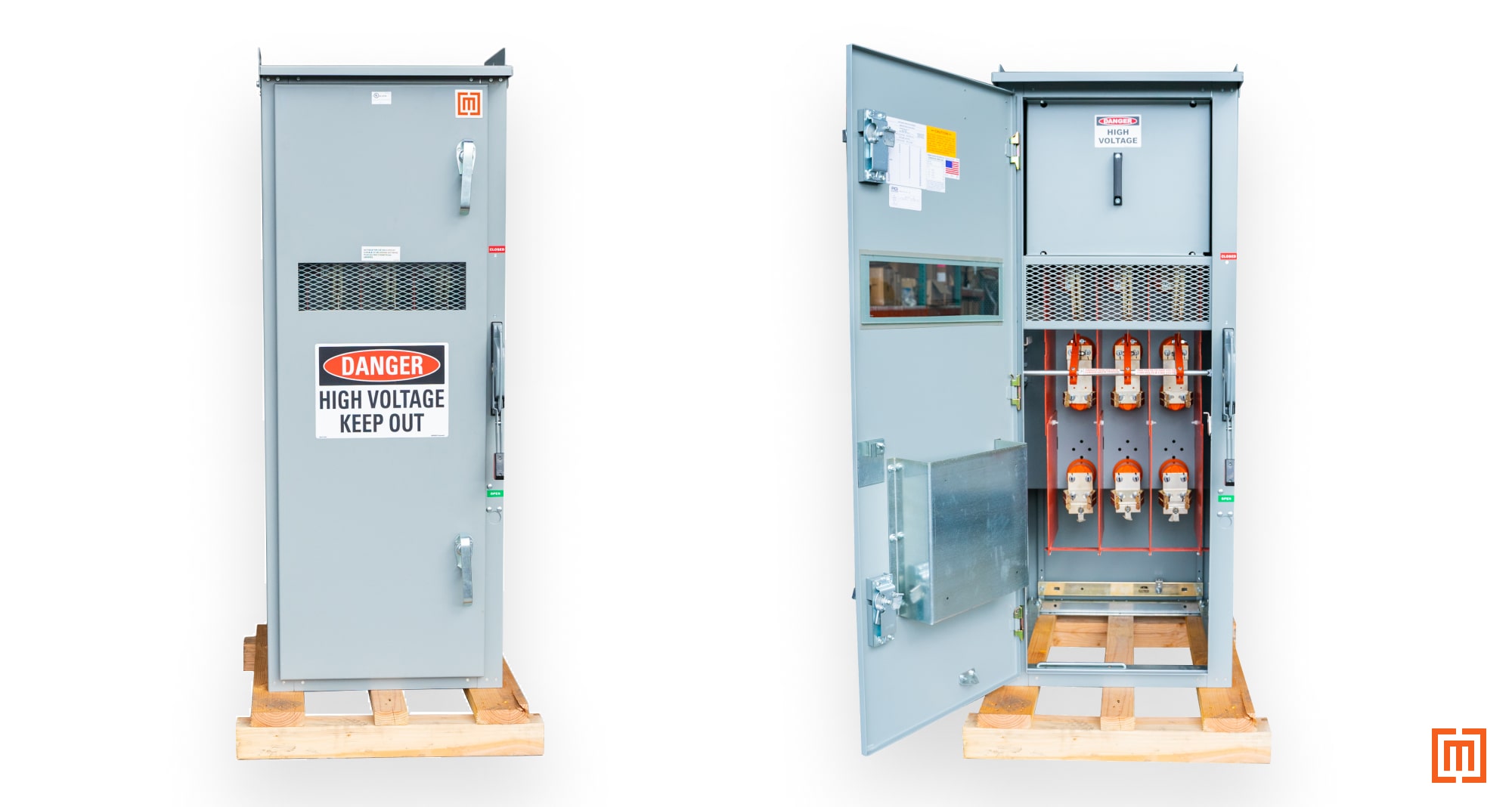
Metal-Enclosed Switchgear Ratings
Standard ratings are 5 kV and 15 kV with up to 600 amps current carrying capacity. Larger custom-built units can reach 38 kV and 1,200 amps.
Inside the enclosure, you’ll find the bus, switches, protective devices, and sometimes metering equipment. Since the sides are made from bolted panels, metal-enclosed switchgear are modular and easy to customize. This design gives you flexible installation options, allowing power to feed from the sides or from below.
Metal-enclosed switchgear are usually placed in limited-access areas like substation yards or locked mechanical rooms. It’s also common to see them close-coupled (attached) to a substation, or mounted on a transformer skid.
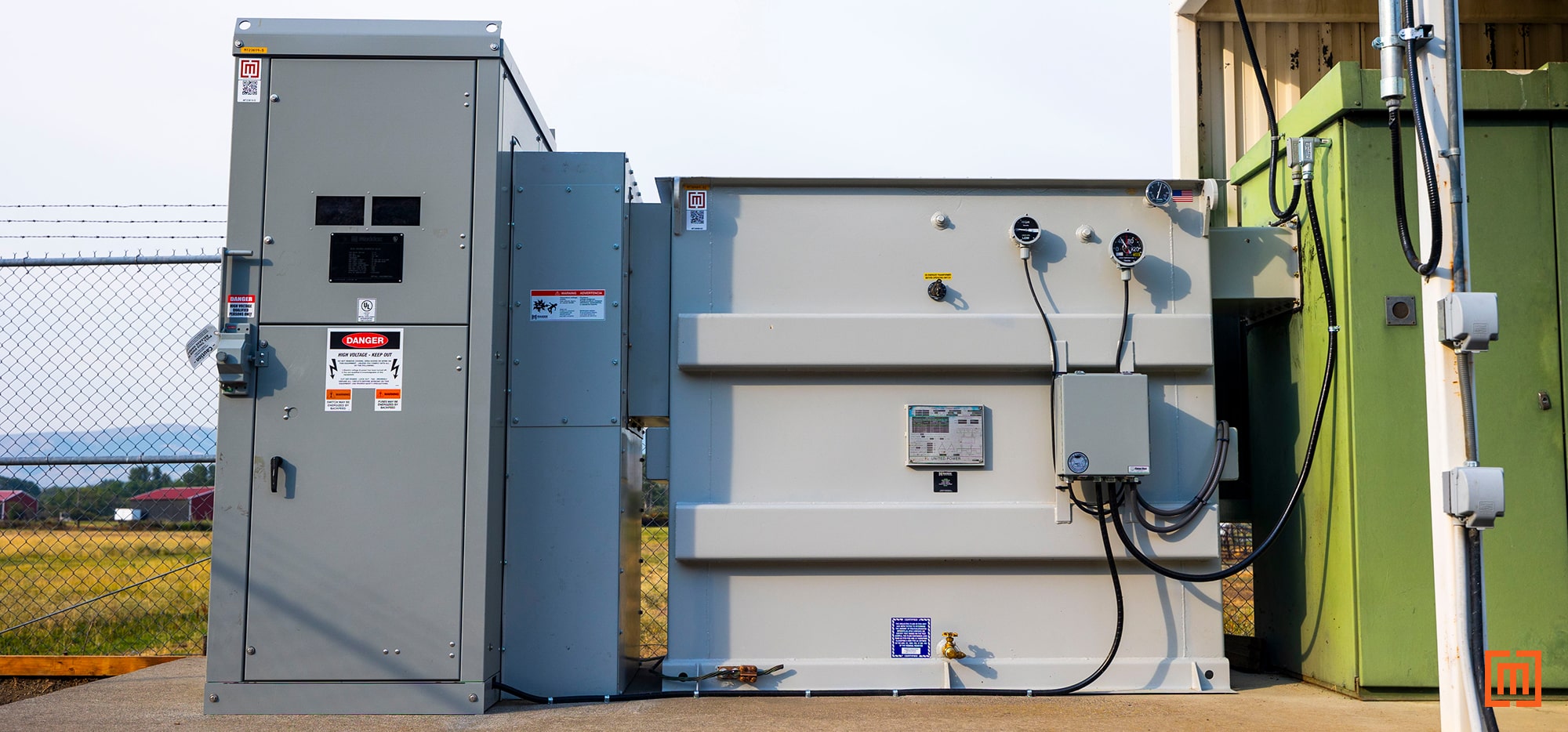
Parts of Metal-Enclosed Switchgear
A metal-enclosed switchgear are made up of several key components:
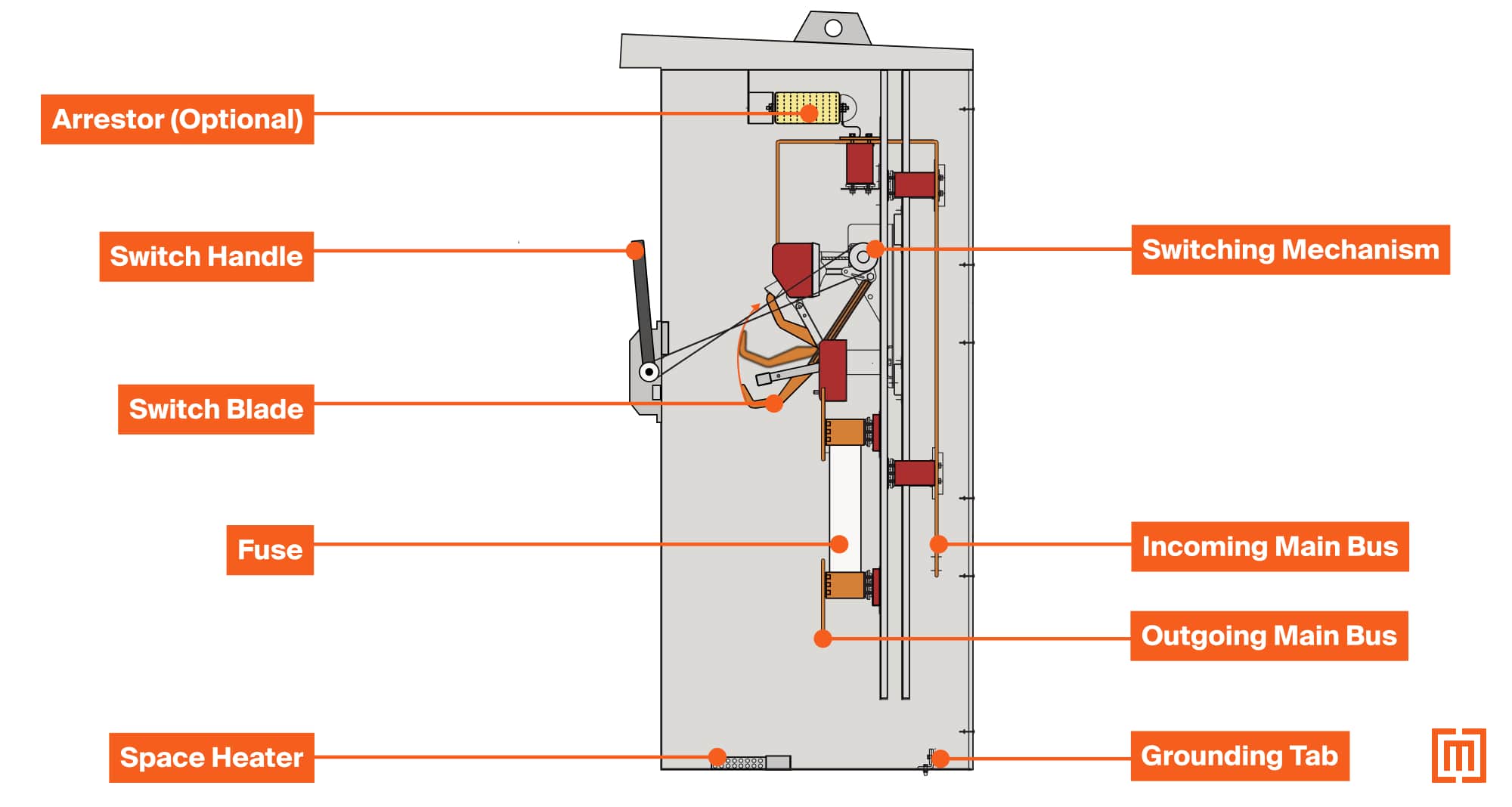
Main Busbar
The main “bus” is responsible for carrying the electrical current from the source to the load. The current rating of the bus must be consistent with the power system where the unit is installed.
The Switch
The mechanism that opens and closes the circuit controlling the connection between the power source and the load.
Fuses
Fuses are overcurrent protection devices used to interrupt the flow of overcurrent.
Door Interlock
The door interlock is a safety measure that prevents users from opening the switchgear door when the circuit is closed. Sometimes, they have a sequence of locks (also called Kirk Keys) to control switchgear access.
Enclosure
Metal gray bolted panels provide protection against incidental contact with the switch mechanism and live components.
Viewing Windows
Many metal-enclosed units offer windows to check for blown fuses and confirm switch positions.
Space Heater
Some metal-enclosed switchgear have a space heater to remove excess moisture.
Arrestor
This is an optional device that protects the connected equipment from voltage spikes caused by lightning or switching surges.
Those are the main features of metal-enclosed switchgear. Let’s move on to pad-mounted units.
What are pad-mounted switchgear?
Pad-mounted switchgear are low-profile and tamper-proof units built to withstand outdoor elements. They’re often used for feeder sectionalizing in loop or radial distribution systems. These units are also ideal for load transfer during routine maintenance or contingency events.
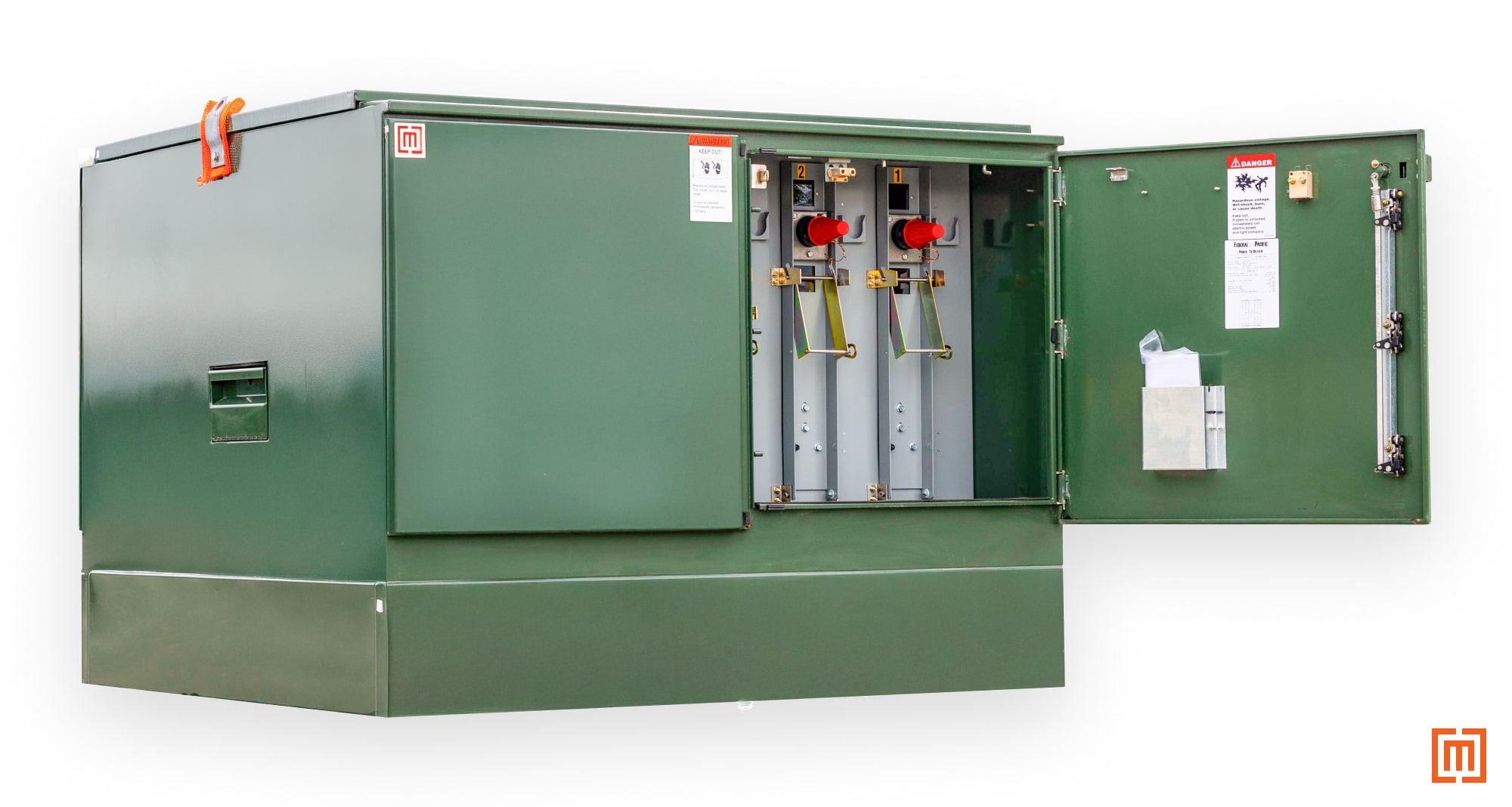
Pad-Mounted Switchgear Ratings
Standard ratings are 15 kV to 25 kV and up to 600 amps continuous bus rating. Larger sizes might be available for custom projects.
These switchgear are painted pad-mount green to blend in with the surrounding landscape. For outdoor projects that need a less visible footprint, padmounted switchgear are the preferred choice.
Parts of Pad-Mounted Switchgear
Pad-mounted units share many of the same features as metal-enclosed switchgear, with a few differences:
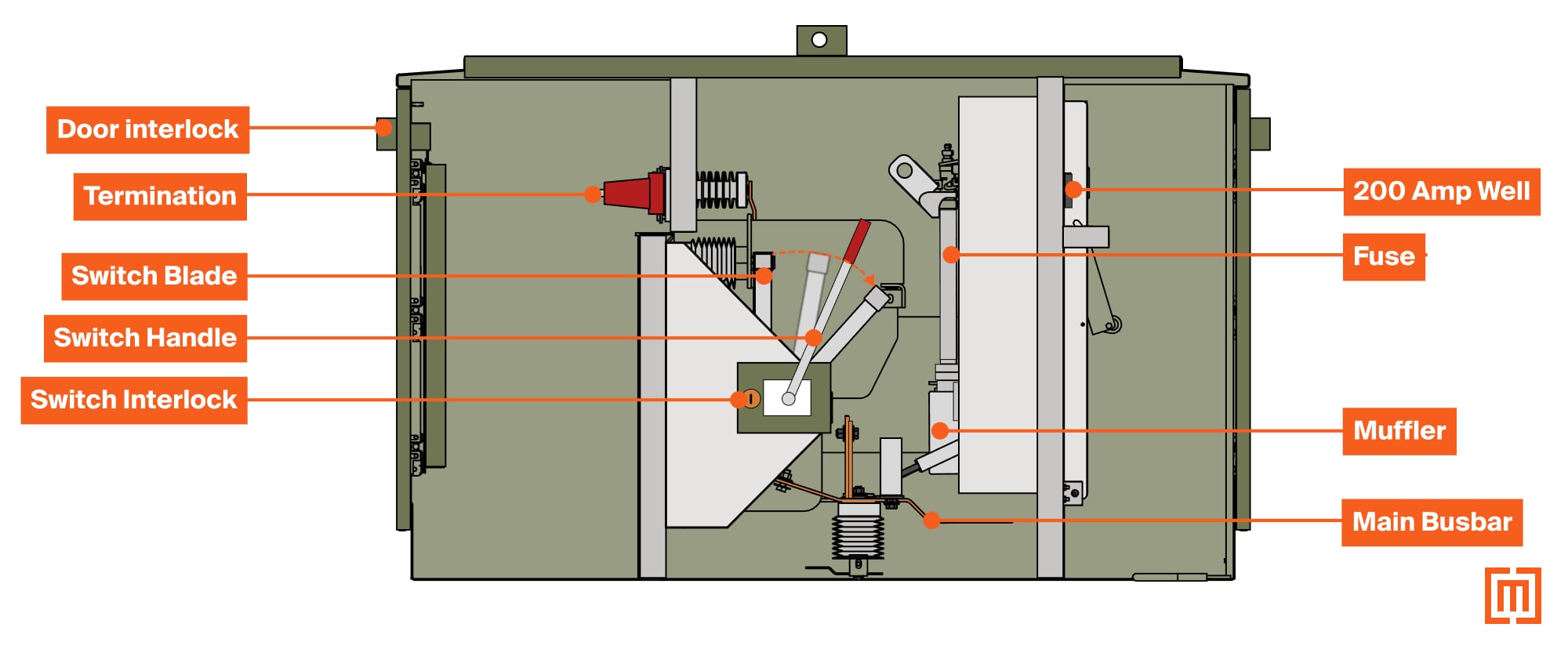
Main Busbar
The main “bus” is the part responsible for carrying the electrical current from the source to the load. The current rating of the bus will need to be consistent with the power system where the unit is installed.
The Switch
The mechanism that opens and closes a circuit controlling the connection between the power source and the load.
Fuses
Fuses are overcurrent protection devices used to interrupt the flow of overcurrent.
Terminations
Dead-front bushings offer insulated termination for incoming and outgoing power.
Door Interlock
The door interlock is a safety measure that prevents users from opening the switchgear door when the circuit is closed. Sometimes, a pad-mount may have a sequence of locks (also called Kirk Keys) to govern switchgear access.
Enclosure
The green, tamper-proof structure that houses the fuse and switch sections.
Viewing Windows
Many pad-mounted units offer windows to confirm switch positions.
Circuit Configurations
Pad-mounted switchgear come in multiple configurations that allows feeder sectionalizing in loop or radial distribution systems.
Advantages and Disadvantages of Switchgear Types
Which enclosure works best for your project depends on a number of factors. Here’s a helpful summary of the key features of each type.
Switchgear vs. Internal Load Break Switches
Internal load break switches (LBOR) and standalone switchgear both perform the same basic job. Opening and closing electrical circuits. But when choosing between them, there are several differences to consider:
Cost
Internal LBOR switches are built into a pad-mount transformer. This means you don’t need a separate standalone unit. Which makes them more cost-effective than standalone switchgear.
Space
Since LBOR switches are already housed inside the transformer cabinet, they don’t require any additional space. They already have all of the necessary connections. Standalone switchgear, on the other hand, requires its own pad, underground connections, and terminations. All of which require additional space.
Short-Circuit Ratings
While space and cost are important, the short-circuit rating of your switch needs to take priority. The switch requires a short-circuit rating that can handle the available fault current at the location where it’s installed. Most LBOR switch designs incorporate ratings between 12kA and 16kA as a rule. However, a metal-enclosed switchgear can offer a higher short-circuit rating.
If your system needs a short-circuit rating that exceeds the rating of an LBOR switch, you may need a standalone switchgear unit.
Conclusion
Switchgear protect your power system from faults. They also enable you to isolate specific sections of your system.
Maddox has metal-enclosed and pad-mounted switchgear units stocked around the country ready to ship to you.
Fill out the form below to get a quote for the unit you need.

